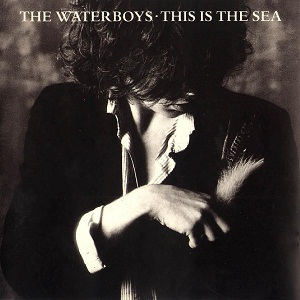This Is the Sea
| This Is the Sea | ||||
|---|---|---|---|---|

Cover art by Lynn Goldsmith
|
||||
| Studio album by The Waterboys | ||||
| Released | 16 September 1985 | |||
| Recorded | Park Gates Studio, Hastings, England Livingstone Studios, London Seaview Studios, London The Chocolate Factory, London R G Jones Recording Studios London Townhouse Studios, London Good Earth Studios, London February–August 1985 |
|||
| Genre | Rock, Progressive rock, Folk rock | |||
| Length | 42:08 | |||
| Label | Island, Chrysalis | |||
| Producer | Mike Scott, John Brand, Mick Glossop, Karl Wallinger | |||
| The Waterboys chronology | ||||
|
||||
| Professional ratings | |
|---|---|
| Review scores | |
| Source | Rating |
| Allmusic | |
| Melody Maker | (favourable) |
| Rolling Stone | (not rated) |
| The Rough Guide to Rock | (favourable) |
| Kerrang! | |
This Is the Sea, released in September 1985, is the third The Waterboys album, and the last of their "Big Music" albums. Considered by critics to be the finest album of their early rock-oriented sound, described as "epic" and "a defining moment", it was the first Waterboys album to enter the United Kingdom charts, peaking at number 37. Steve Wickham makes his Waterboys recording debut playing violin on 'The Pan Within' and subsequently joined the band, appearing on the video of "The Whole of the Moon". This Is the Sea is the last album with contributions from Karl Wallinger, who left the group to form his own band, World Party.
Mike Scott, the album's principal songwriter and leader of The Waterboys, describes This Is the Sea as "the record on which I achieved all my youthful musical ambitions", "the final, fully realised expression of the early Waterboys sound", influenced by The Velvet Underground, Van Morrison's Astral Weeks, and Steve Reich. Regarding the end of the groups sound being tied to "The Big Music" after completing the album, Scott stated, "I finished with that kind of music to achieve whatever it was I was trying to achieve with that album. That overdubbed big sounding music, I didn't need to do it anymore."
The album was recorded between March and July 1985, and released that October (see 1985 in music). A remastered and expanded version was released in 2004. This Is the Sea contains the best-selling Waterboys single, the song "The Whole of the Moon". The album cover is a photograph taken by Lynn Goldsmith.
Scott began writing songs for This Is the Sea in the spring of 1984, beginning with the song "Trumpets". Scott recalls that in December 1984 "during The Waterboys' first American tour, [he] bought two huge hard-bound books... in which to assemble [his] new songs" For the following two months Scott worked on the songs in his apartment, writing the lyrics, and working on guitar and piano arrangements. Scott wrote between thirty-five and forty songs, but felt that the nine songs that made it onto the album "were the ones that were intended to be there". The first song from the album to be played live was "Trumpets", on 10 April 1984.
...
Wikipedia
